CNC auto parts, known as Computer Numerical Control (CNC) auto parts, are one of the key components in the automotive manufacturing and repair process. They are manufactured using CNC technology, which means that a computerized control system is used in the manufacturing process to accurately control the movement of mechanical tools and equipment to produce highly precise and complex automotive parts.CNC automotive parts can include engine components, braking system components, steering and suspension components, electronic control systems, body structures, and other important parts.
CNC technology plays a vital role in automobile manufacturing. Here are a few key aspects of CNC technology in automotive manufacturing:
Precision Machining and Manufacturing: CNC machine tools allow precise control of the movement of cutting tools, enabling the manufacture of highly complex automotive parts with assured precision and performance.
Productivity: CNC technology increases productivity and reduces human error and variation, resulting in faster and more consistent manufacturing.
Customized Production: CNC technology supports customized production by enabling production lines to adapt to a wide range of automotive models and specifications.
Reduced Scrap: The high precision control of CNC machines helps reduce scrap rates, saving materials and resources.
Tracking and Quality Control: Data logging and real-time monitoring of the CNC manufacturing process helps to track the manufacturing of each part to ensure it meets quality standards.
CNC automotive parts typically consist of several basic components that are categorized based on their function and location. Below are some of the basic components and classifications of common CNC automotive parts:
Engine components: These components include cylinder heads, crankshafts, pistons, valves, cylinder liners, etc., which are used for engine operation and power output.
Brake System Components: Brake discs, brake calipers, brake pads, etc. are used to control and maintain the braking performance of the car.
Steering and suspension components: including suspension arms, steering gears, bearings, etc., used to control the suspension and steering of the automobile.
Electronic Control Systems: Electronic Control Units (ECUs), sensors, wiring harnesses, etc., used to monitor and control various functions of the automobile, such as engine control, safety systems and entertainment systems.
Body Structure: Frames, body panels, doors, windows, etc., which are used to build the exterior and interior structure of a vehicle.
Driveline Components: Transmission, driveshafts, differentials, etc., used to transmit and control power to the wheels.
Other Important Components: There are many other CNC auto parts such as fuel injection systems, exhaust systems, cooling systems, etc. which play a key role in the performance and functionality of the automobile.
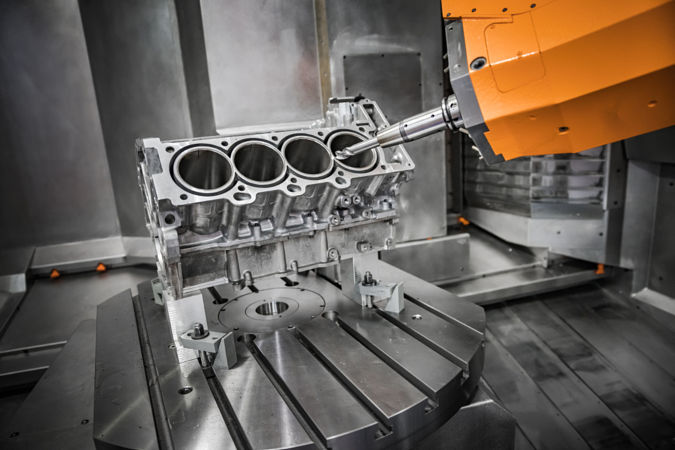
The CNC manufacturing process is a highly automated and precise manufacturing process that uses computer numerical control technology to control the movement of mechanical tools and equipment.
Before CNC manufacturing can begin, the appropriate material first needs to be selected, which usually depends on the design requirements and function of the part. The material can be metal (e.g. aluminum, steel, copper, etc.), plastic, ceramic or composite. Once the material selection is complete, the materials need to be prepared, including cutting, machining and cleaning to ensure they meet the specifications and quality standards for manufacturing.
CNC machine tools are key tools in the manufacture of CNC parts and they have highly accurate motion control systems. At the machine tool, programmers are required to create CNC programming codes that instruct the machine how to cut and shape materials. Programming code includes the definition of parameters such as tool paths, cutting speeds, feed rates, and depth of cut. The accurate setting of these parameters is critical to ensuring the quality of the part.
Once the CNC programming is complete, the manufacturing process enters the cutting and molding phase. This phase includes:
In a cutting operation, the tools on the CNC machine are precisely controlled to cut and remove excess material. The tool path is calculated from the programming code and can be linear, rotary or complex contours depending on the design of the part. Cutting operations require a high degree of precision to ensure that the shape and dimensions of the final part are accurate.
Once the material has been cut, forming and surface preparation operations may be required to further finish the part. This can include processes such as grinding, milling, drilling, welding, heat treating and painting to meet the specific requirements of the part.
Quality control is a key part of the CNC manufacturing process. It involves the use of measuring instruments and equipment to check the dimensions, surface finish and material properties of the parts. Any deviations or defects need to be corrected immediately to ensure that the quality of the final part meets standards. Commonly used quality control methods include CMM, microscopic inspection, X-ray inspection and ultrasonic inspection.
The engine is the heart of an automobile, and it contains many critical CNC parts that are used to ensure engine performance, efficiency and reliability. Below are some common CNC engine parts and their manufacturing and applications:
CNC manufactured pistons and cylinder liners are critical components in an engine. They must be precisely fitted to ensure sealing and smooth movement.CNC machines are used to manufacture these parts to ensure that their dimensions and surface quality meet stringent requirements.
Crankshafts and connecting rods are high-load components in engines that require precise CNC machining to ensure smooth movement and high strength. CNC technology is used to cut and mold these parts to ensure they meet design specifications.
The braking system is a critical component of automotive safety, and it relies on high-precision CNC components to ensure accurate braking performance. Below are some common CNC braking system components:
CNC machines are used to manufacture brake discs and calipers to ensure they are flat and dimensionally accurate. These components require a high degree of thermal stability and wear resistance to cope with the high temperatures and friction during braking.
Steering and suspension systems are critical to a car's handling and comfort. Below are some of the CNC-manufactured steering and suspension components:
CNC technology is used to manufacture steering gears and suspension arms to ensure their precision and strength. These components need to be highly reliable to ensure ride stability and suspension performance.
Modern automobiles rely on complex electronic control systems to manage engine, transmission, safety and entertainment functions. Here are some of the CNC components used in electronic control systems:
The ECU is the heart of a vehicle's electronic control system, and its housing must be manufactured by CNC machines to ensure protection and heat dissipation for the electronics inside.
Safety systems and body structures also use CNC parts to ensure the safety and structural strength of the vehicle. Here are some examples:
CNC machines are used to manufacture components for airbags to ensure rapid deployment and protection in the event of an accident.
The manufacture of frames and body panels requires highly accurate CNC machining to ensure the structural strength and overall quality of the vehicle.
Through the use of CNC technology, these different types of CNC parts are able to achieve high precision, high performance and high reliability in the automotive industry. Automakers rely on these parts to produce modern vehicles that meet the growing market demand for safety, performance and comfort.
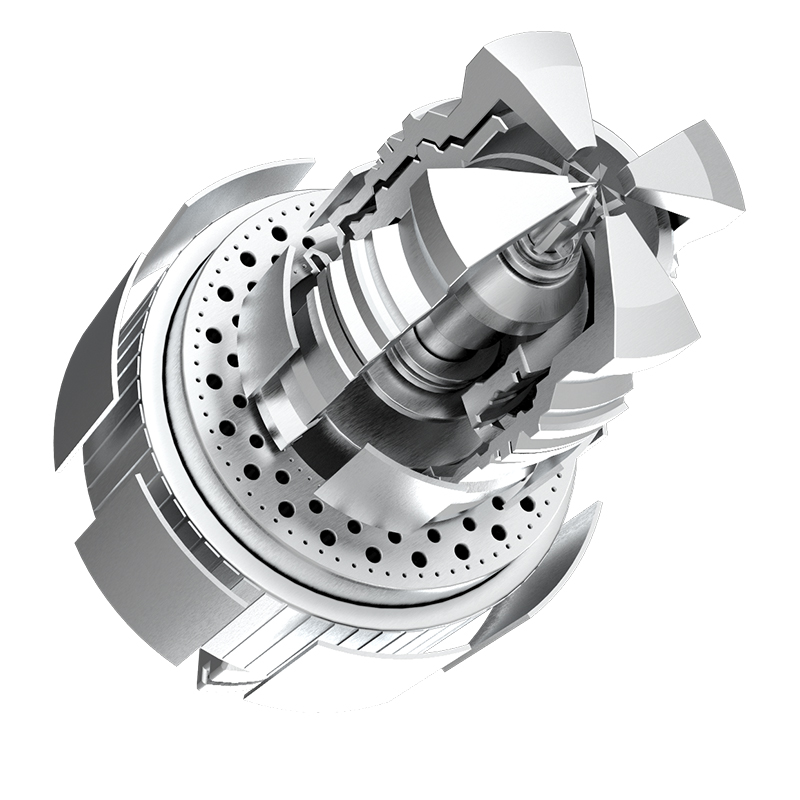
The performance metrics of CNC parts are key factors in evaluating their performance and quality. Below are some common performance metrics:
CNC manufacturing allows for very high dimensional accuracy, often at the sub-millimeter level. This ensures that the dimensions of the part are consistent with the design specifications and is critical to the performance of engines and other critical systems.
CNC machines are able to produce smooth surfaces, which is critical for components such as braking systems, engine cylinder liners and pistons, as surface smoothness has a direct impact on friction and wear.
CNC parts typically have high strength and stiffness, which is critical to the structural strength of the vehicle and the stability of the suspension.
CNC parts typically have high quality and durability, characteristics that are critical to the performance and reliability of a vehicle. The following are quality and durability considerations for CNC parts:
Material selection is critical to the quality and durability of the part CNC manufacturing can accommodate a variety of materials including high strength metals, wear resistant materials and high temperature alloys to meet the requirements of different components.
Some CNC parts may require heat treatment or special coatings to increase their wear and corrosion resistance. These treatments can increase part life and reduce maintenance costs.
CNC parts have a direct impact on automotive performance. The following are some of the areas that are related to automotive performance:
CNC-manufactured engine parts, such as pistons, crankshafts and cylinder liners, provide higher power output and combustion efficiency, which improves vehicle acceleration and fuel efficiency.
CNC-manufactured braking system components, such as brake discs and brake calipers, provide superior braking performance, ensuring that the vehicle can be stopped quickly in an emergency, improving safety.
CNC-manufactured suspension components, such as steering gears and suspension arms, provide more stable and responsive suspension performance, improving vehicle handling and comfort.
Modern automotive manufacturing focuses not only on performance, but also on energy efficiency and environmentally friendly features, and CNC components play an active role in this regard:
CNC manufacturing often reduces scrap and material waste, which helps reduce costs and minimize environmental impact.
CNC manufacturing allows for the design of lighter weight components, which helps to reduce overall vehicle weight, improve fuel efficiency and reduce exhaust emissions.
The high efficiency and precision of CNC machines reduces energy consumption and lowers the carbon footprint of the manufacturing process.
CNC components play an integral role in automotive manufacturing, and their performance, quality and environmental characteristics have a direct impact on the performance and sustainability of modern vehicles. Automakers continue to rely on CNC technology to meet consumer demand for high performance, quality, and environmental friendliness.
The electric vehicle market is growing rapidly as concerns about the environment and sustainability increase. This has led to a rise in demand for efficient and precise CNC components to meet the performance and efficiency requirements of electric vehicles.
The rise of autonomous driving technology requires more sensors and electronic control systems, placing greater demands on CNC manufacturers to provide highly precise components.
Consumers are increasingly inclined to customize their vehicles, which has led to the need for CNC parts suppliers to offer a diverse range of options to meet different design needs.
CNC parts suppliers play an important role in the automotive manufacturing and repair ecosystem. The following are the key roles of suppliers:
Suppliers need to have highly accurate CNC machining capabilities to meet the demanding part size and quality requirements of automakers.
Suppliers should be actively involved in R&D and innovation to provide new solutions and technologies to meet the changing needs of the automotive market, such as electric vehicles and autonomous driving technologies.
Suppliers are required to implement strict quality control standards to ensure that delivered components meet standards and are able to operate safely and reliably in vehicles.
Suppliers also need to focus on sustainability and environmental protection, taking steps to minimize waste and waste of resources to reduce the impact on the environment.
Choosing the right CNC parts supplier is critical for vehicle manufacturers and repairers. Here are the key factors to consider when choosing a supplier:
Suppliers must have advanced CNC technology and equipment to meet high precision and efficiency requirements. Understanding the supplier's machine and process capabilities is an important factor in selection.
Ensure that the supplier has relevant quality certifications such as ISO 9001, as well as certifications for specific industries such as automotive industry standards (e.g. IATF 16949) to ensure the quality of the parts.
Suppliers must be able to deliver parts on time to ensure production and maintenance schedules are not disrupted. Understanding the supplier's delivery record and reliability is key.
While quality is important, cost-effectiveness is also a key factor. Negotiate prices with suppliers and consider overall costs, including transportation and inventory costs.
Consider suppliers' sustainability and environmental practices to ensure they align with your values.
The price range of CNC parts varies depending on part type, complexity and quantity. Some high-precision parts may be more expensive, while common standard parts may be less expensive. Suppliers often provide quotes and delivery schedules so that customers can select parts that fit their needs and budget. Ensure that price comparisons and negotiations are carried out when choosing a supplier to get the most competitive price.
The market and suppliers of CNC parts play a vital role in the automotive industry. Understanding market trends, choosing the right suppliers and managing costs are key tasks for automotive manufacturers and repairers to ensure they are able to deliver high quality, high performance and reliable vehicles.
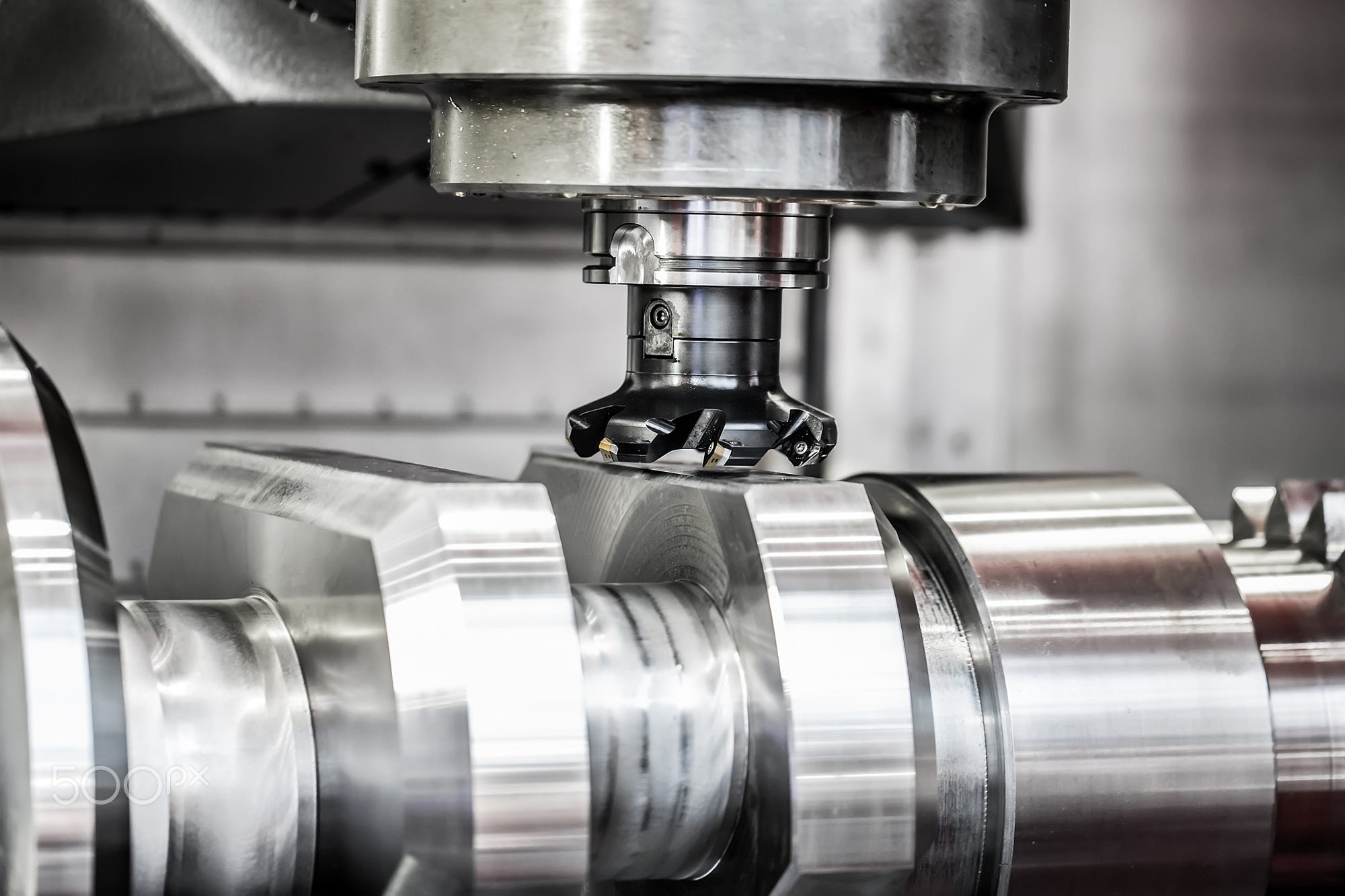
Problem Description: Brake system problems may include brake failure, brake noise, brake fluid leaks, or brake malfunction.
Causes: Worn brake discs, faulty brake calipers, leaking brake lines, etc.
Problem Description: Engine performance problems may be characterized by power loss, high-speed vibration, and engine fault light illumination.
Causes: Oil and gas supply problems, ignition system failure, engine sensor failure, etc.
Problem Description: Electronic control system problems may include starting problems, electronic control unit (ECU) malfunctions or vehicle system error codes.
Problem Causes: Disconnected wires, sensor malfunction, ECU program problems, etc.
Replace brake pads and discs regularly: Brake system consumables need to be replaced regularly to ensure braking performance.
Check brake fluid: Check the level and quality of brake fluid to ensure proper operation of the braking system.
Clean brake calipers and discs: Clean brake calipers and discs regularly to prevent dust and impurities from affecting braking effectiveness.
Regular Oil and Filter Changes: Change oil and filters regularly to ensure engine lubrication and performance.
Maintain Proper Cooling: Ensure proper operation of the cooling system to prevent engine overheating.
Clean Air Filters Regularly: Clean or replace air filters regularly to ensure clean intake air and optimized combustion.
Regularly check wire connections: Regularly check wire connections to the electronic control system to ensure there are no disconnections or corrosion.
Update Software: Ensure that the software for the ECU and other control modules is always updated to the latest version to resolve possible problems and improve performance.
Trouble Code Scanning: Regularly scan your vehicle's trouble codes to identify potential problems in a timely manner.
Inspect brake pads and discs: Check brake pads and discs for wear and replace as needed.
Check Brake Calipers and Fluid Lines: Check for seized or damaged brake calipers and leaking brake fluid lines.
Bleed Brake Fluid: If the braking sensation deteriorates, you may need to bleed the brake fluid to remove air bubbles.
Check the vacuum booster: If the problem is with the hydraulic booster or vacuum booster, you need to check its operation.
Check Ignition System: Check the spark plugs, spark plug wires, and ignition coil to make sure the ignition system is working properly.
Scan for Error Codes: Use a diagnostic tool to scan the ECU for error codes for possible problems.
CHECK FUEL SYSTEM: Check the fuel filter, fuel pump and injectors to ensure proper fuel supply.
CHECK AIR SUPPLY: Check the air filter and intake lines to ensure a smooth air supply.
Check Wire Connections: Check for loose or corroded wire connections to the electronic control module and repair or replace damaged wires.
Scan for Error Codes: Use a diagnostic tool to scan the ECU for error codes to determine the exact location of the problem.
Reset Error Codes: After fixing the problem, use a diagnostic tool to reset the error codes to ensure that the problem has been resolved.
Preventive maintenance is key to ensuring the long-term performance and safety of your vehicle. Here's the importance of preventive maintenance:
Extend Parts Life: Regular maintenance extends the life of CNC parts and reduces the frequency of parts replacement.
Reduces repair costs: Preventive maintenance reduces the risk of unexpected breakdowns, which in turn reduces the cost of repairing and replacing parts.
In the future, CNC technology will continue to move towards higher precision. New CNC machines will feature faster positioning and finer control, enabling higher levels of precision machining. This will help produce more complex, higher performance parts to meet the ever-increasing performance requirements of automobiles.
Hybrid manufacturing is one of the future trends in CNC technology, combining traditional CNC machining with emerging technologies such as 3D printing. This will allow manufacturers to produce parts more flexibly, reducing scrap and lowering costs. Automakers can use different manufacturing methods as needed for highly customized parts manufacturing.
Additive manufacturing technologies, such as 3D printing, will play an increasingly important role in CNC manufacturing. It can be used to produce complex structures and lightweight parts to improve the fuel efficiency and performance of automobiles. In addition, additive manufacturing can shorten the production cycle of parts, allowing them to be brought to market faster.
In the future, CNC automotive parts manufacturing will be further automated. Automated production lines will utilize robots and automated equipment to achieve higher productivity and consistency. This will lower labor costs and reduce the risk of human error.
AI and machine learning will play a key role in CNC manufacturing. They can be used to optimize production processes, predict equipment failures, improve quality control, and even perform autonomous programming and process optimization. This will allow manufacturers to be more competitive while delivering higher quality parts.
IoT technology will enable CNC machine tools and production equipment to connect to the Internet for remote monitoring and data analysis. Manufacturers can monitor equipment status, productivity and quality, as well as perform preventive maintenance in real time. This helps reduce downtime and increase productivity.
Automakers will increasingly focus on sustainability. In the future, CNC automotive components will be manufactured using more sustainable materials such as recycled plastics, composites and biodegradable materials. This will help reduce carbon footprint and resource consumption.
Lightweight design will continue to be a key trend to reduce vehicle fuel consumption and emissions, and CNC manufacturing will be used to produce lighter but still high-strength parts, such as aluminum alloys and carbon fiber composite parts.
In the future, smart car technology will merge with CNC parts manufacturing to create more advanced, safer and smarter cars.
CNC parts can integrate sensors and control systems for monitoring vehicle performance and driving conditions. This data can be used for automated driving, intelligent driver assistance systems and vehicle diagnostics.
CNC-manufactured parts can have autonomous maintenance features that can detect faults and notify the vehicle owner or repair center. This will improve vehicle reliability and safety.
Smart car technology allows car owners to customize their cars according to their personal preferences and needs.CNC manufacturing can produce customized parts to meet consumer requirements.
The future of the CNC automotive parts manufacturing sector will be filled with opportunities for innovation and growth. High-precision manufacturing, automation, sustainability and integration with smart car technologies will drive the automotive industry forward to deliver safer, higher-performance and more sustainable automotive components. Manufacturers and technology companies will continue to strive to meet consumer demands while ensuring that automotive manufacturing remains competitive in the future.
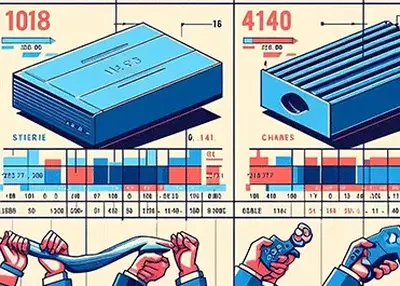 1018 vs. 4140 Steel: How to Choose the Right MaterialNovember 28, 2023Steel is one of the most widely used materials in various industries, such as construction, automotive, aerospace, and manufacturing. However, steel is also susceptible to corrosion and rust when exposed to moisture and oxygen.view
1018 vs. 4140 Steel: How to Choose the Right MaterialNovember 28, 2023Steel is one of the most widely used materials in various industries, such as construction, automotive, aerospace, and manufacturing. However, steel is also susceptible to corrosion and rust when exposed to moisture and oxygen.view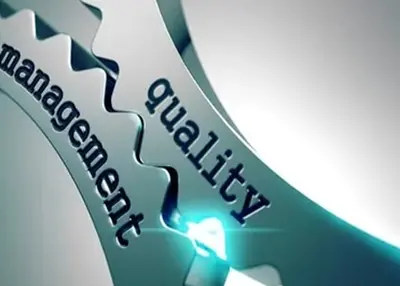 Different Types of Iron: Introduction, Properties, and UsesApril 28, 2024Iron is versatile and has various types with different applications. The right iron is selected based on its benefits. Richconn's expertise makes them outstanding in cast iron part machining.view
Different Types of Iron: Introduction, Properties, and UsesApril 28, 2024Iron is versatile and has various types with different applications. The right iron is selected based on its benefits. Richconn's expertise makes them outstanding in cast iron part machining.view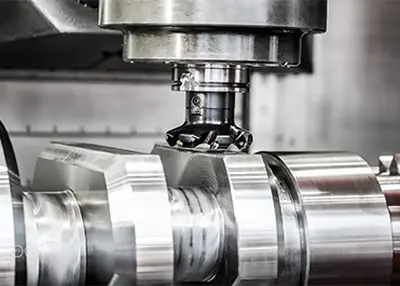 Understanding and Improving Modern CNC MillingOctober 11, 2023CNC MillingCNC milling has been around for more than 50 years, but the technology continues to evolve. Recent advances have made it possible to automate the entire process, from design to finished par...view
Understanding and Improving Modern CNC MillingOctober 11, 2023CNC MillingCNC milling has been around for more than 50 years, but the technology continues to evolve. Recent advances have made it possible to automate the entire process, from design to finished par...view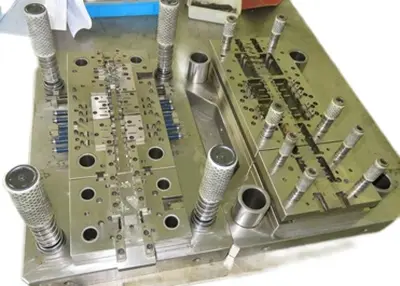 Metal Stamping Die: Professional, Speed, AdvantagesApril 25, 2023Mold products are needed in many industries. Screws and nuts that we use in our daily life, pins and patches used in the electronics industry, equipment housing and internal parts used in the medical ...view
Metal Stamping Die: Professional, Speed, AdvantagesApril 25, 2023Mold products are needed in many industries. Screws and nuts that we use in our daily life, pins and patches used in the electronics industry, equipment housing and internal parts used in the medical ...view What Is CNC Metal Processing | A Comprehensive GuideJune 4, 2024What is CNC metal processing? What should we pay attention to when choosing a reliable partner for the metal processing project? Here come the answers!view
What Is CNC Metal Processing | A Comprehensive GuideJune 4, 2024What is CNC metal processing? What should we pay attention to when choosing a reliable partner for the metal processing project? Here come the answers!view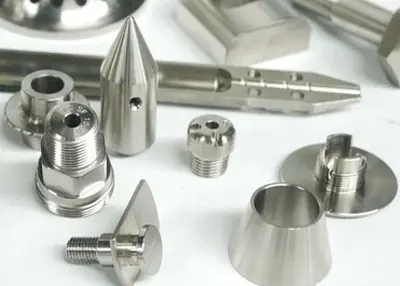 The Complete Guide to CNC Machining Parts: Types, Advantages & DesignApril 3, 2024The following is a thorough introduction to CNC machining parts, which is of great importance for your project. Let’s have a deeper look at these machined parts!view
The Complete Guide to CNC Machining Parts: Types, Advantages & DesignApril 3, 2024The following is a thorough introduction to CNC machining parts, which is of great importance for your project. Let’s have a deeper look at these machined parts!view